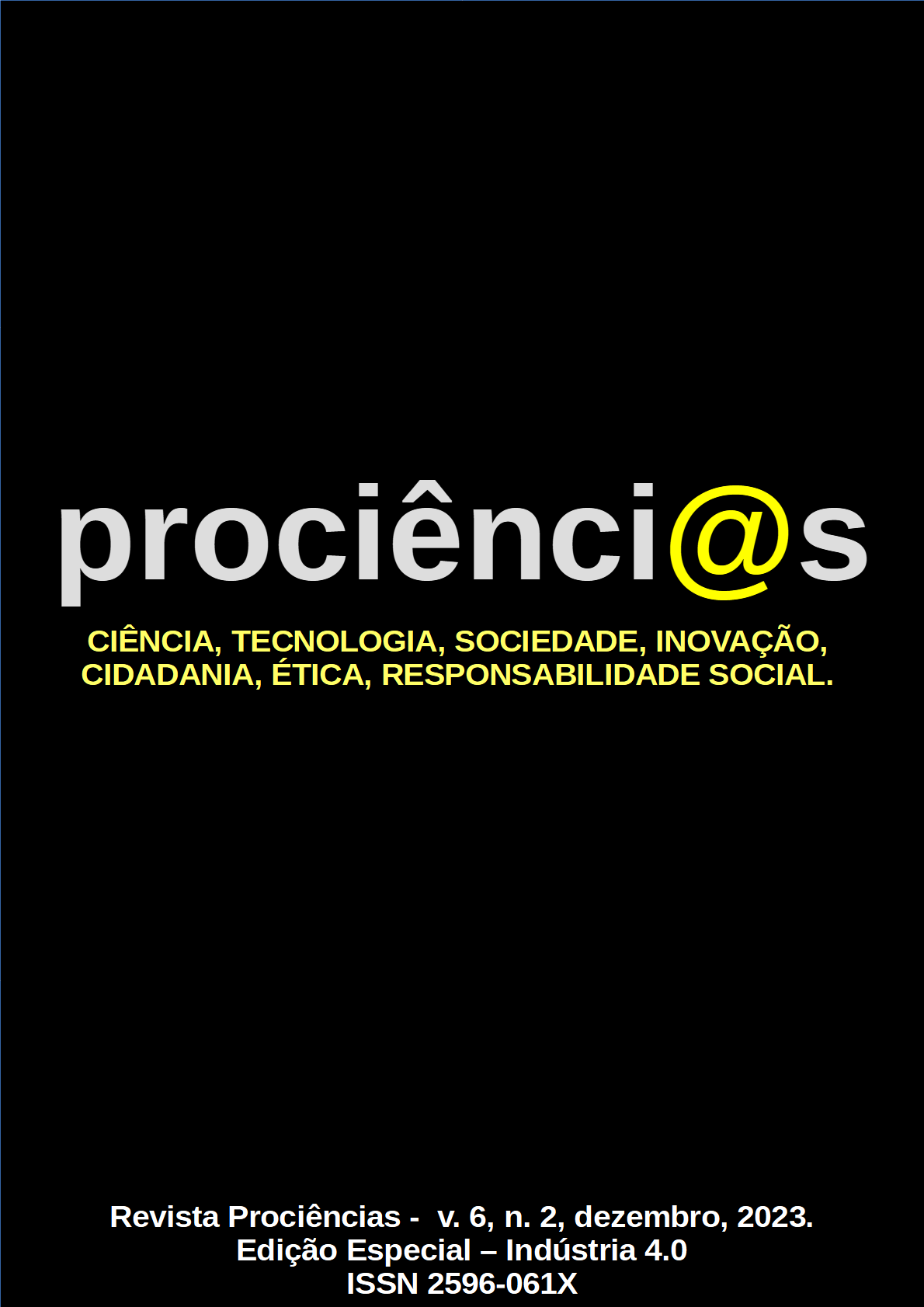DEVELOPMENT OF A PROSTHESIS FOR THE ABSENCE OF THE MIDDLE PHALANX
Abstract
The absence of one of the fingers, whether due to trauma, disease, or a congenital anomaly, causes functional deficiencies and social dysfunctions for the patient. The industry currently offers various options for prostheses, some with functional characteristics that restore some movements of the lost limbs, while others are purely aesthetic. However, a large portion of these prostheses comes with a high monetary cost and difficulty in finding their manufacturing, often imported from developed countries, primarily due to their complexity, making them inaccessible to the majority of people. In addition to the high cost, there is also a lack of a simple and functional model to serve those in need of an individual finger or limb prosthesis. The objective of this study was to investigate a functional mechanical structure that, through a custom-made prosthesis, allows the restoration of restricted finger movements while presenting a low economic cost. To achieve this, exploratory research with qualitative analysis was conducted. The model was developed through the 3D printing process, using PLA as the material. The prototype exhibited the expected flexion, with the achieved angles closely resembling those of human finger flexion. Furthermore, the model also enabled the performance of daily tasks, such as typing and gripping objects. Moreover, the prototype operates based on the patient's stump movement, providing independent mobility and adequate comfort.
Downloads
References
ARAÚJO R., TEIXEIRA P., REIS A., SILVA M.B., MARTINS P.A.F. Single point incremental forming of a medical implant. Key Engineering Materials. 2013; 554-557:1388-93.
BARBINTA AC; Chelariu R; Crimu CI; Istrate B; Nazarie S; Earar K; Munteanu C; Metallographic characterization of a new biomedical titanium-based alloy for orthopedic applications. Bulletin of the Transilvania University of Brasov. Series I: Engineering and Science. 2013; 6(55):83-8
BELTER, JOSEPH T.; Jacob L. Segil; Aaron M. Dollar, Richard F. Weir. Mechanical design and performance specifications of anthropomorphic prosthetic hands: A review. JRRD Volume 50, Number 5, 2013 Pages 599–618.
BONESMART. Knee replacement implant materials. San Jacinto: FARM; 2015.
BRYCE G. RUTTER, Revista Innovation, Spring 2015. P 19.
C. LEE VENTOLA. Medical Applications for 3D Printing: Current and Projected Uses. P T. 2014;39(10):704-11.
CHEN Y, et al. CaliBayes and BASIS: integrated tools for the calibration, simulation and storage of biological simulation models. Brief Bioinform 11(3):278-89. 2010.
DALEFFE, ANDERSON & SCHAEFFER, LIRIO & FRITZEN, DANIEL & CASTELAN, JOVANI. (2013). Analysis of the Incremental Forming of Titanium F67 Grade 2 Sheet. Key Engineering Materials. 554-557. 195-203. 10.4028.
EKSTEEN PD, Van der Merwe AF. Incremental sheet forming (ISF) in the manufacturing of titanium based plate implants in the bio-medical Sector. In: Proceedings of 42nd Computers and Industrial Engineering; 2012 Jul 15-18; Cape Town. New York: Curran Associates; 2012. p. 569-76.
FABI DW, LEVINE B.R. Porous Coatings on Metallic Implant Materials. ASM Handbook, Volume 23: Materials for Medical Devices. 2012:307–319.
GÉRRARD EDDY, Jai Poinern, Sridevi Brundavanam, Derek Fawcett. Biomedical Magnesium Alloys: A Review of Material Properties, Surface Modifications and Potential as a Biodegradable Orthopaedic Implant. American Journal of Biomedical Engineering p-ISSN: 2163-1050 e-ISSN: 2163-1077 2012; 2(6): 218-240.
IAN BIRRELL. 3D-Printed prosthetic limbs: the next revolution in medicine. 2017.
JACOB SCHWARTZ. How CNC Machining and 3D Printing Have Impacted Medical Devices and Prosthetics. 2015.
LEAL, NUNO. Desenvolvimento do processo de fabrico de próteses humana sem silicone para substituição de órgãos em tecidos moles. Faculdade de Engenharia da Universidade do Porto Fevereiro de 2011.
LUCENA, BRUNO. Amputação e próteses de Membros Superiores. Faculdade Maurício de Nassau, Campina Grande, 2015.
M. NAVARRO, A; Michiardi; O. Castaño and J. A. Planell. Biomaterials, Implants and Tissue Engineering, Institute for Bioengineering of Catalonia (IBEC). CIBER-BBN, 08028 Barcelona, Spain.
MATASSI F., CARULLI C., CIVININI R., INNOCENTI M. Cemented versus cementless fixation in total knee arthroplasty. Joints. 2014 Jan 8;1(3):121-5. eCollection 2013 Jul-Sep.
NOURI ALIREZA; Peter D. Hodgson; Cui’e Wen. Biomimetic Porous Titanium Scaffolds for Orthopedic and Dental Applications. Biomimetics Learning from Nature. 2010 ;21:415–450.
PAITAL, NARENDA (2009) - Sameer R. Paital, B. Narendra B. Dahotre. Calcium phosphate coatings for bio-implant applicatios: Materials, performance factors, and methodologies. Materials Science and Engineering R 66 (2009) 1-70.
SAKALKALE, DURGADAS P. et al.Total hip arthroplasty in patients on long-term renal dialysis. The Journal of Arthroplasty , Volume 14 , Issue 5 , 571 - 575
SCHULZ, R. C. Acrylamide polymers. In: ENCYCLOPEDIA ofpolymer science and engineering. New York: John Wiley,1985. v. 1, p. 169-211.
SELIM KÜSEFOĞLU. Carbon Fiber / Epoxy Composites: Ideal Materials for Orthopedic Prosthetics. 2018.
TORRES, MARCELO. Evolução das próteses mecânicas. Universidade Estadual Paulista, Guaratinguetá, 2010.
WEBSTER, JOHN G. Encyclopedia of Medical Devices and Instrumentation. Volume 1º, 2º edição. John Wiley & Sons, Inc. 2006.


